It’s no secret that I love using herbal body oils from head to toe, and my hair and scalp are no exception. Depending on your heritage, you might’ve grown up with scalp oiling as part of your hair care routine – or you might be wondering why would anyone even think of putting oil on their head. (After all, don’t we wash our hair to get the oil out?)
I grew up NEVER wanting to have greasy hair! I can remember being teased in grade school if my hair looked unwashed. So this is one home herbal remedy that for years, I just felt overwhelmed at the thought of an oily head. I knew it was supposed to be good for me, but I avoided it.
Howver…when I finally triesd it, I was really surprised!
“Scalp oiling is more calming for me than drinking herbal tea and even taking a bath.”
And now I just have to tell you, there are very few things I do in my life that help me feel as calm and grounded as scalp oiling. It is truly a deep nervous system re-set. Embodied herbal medicine at its best.
Finally, I decided to make it a monthly practice. If more than a month goes by without out this re-set, I know it’s time to put a check on how much I take care of everyone else and put my own care back on the top of the list.
CAN YOU RELATE??
Scalp oiling is more calming for me than drinking herbal tea and even taking a bath. I seriously hope you trust me on this one and just do it!
My Ayurvedic teachers taught me to use this ancient practice to ease nervousness and stress of all kinds. Through own experience, I’ve learned that it helps me settle into a state of being in which my body can rest and restore.
Over the years, I’ve gathered many insights into the art of scalp oiling, including when you do NOT want to do it which will help you avoid common mishaps and make it easier to tap into that sacred healing state.
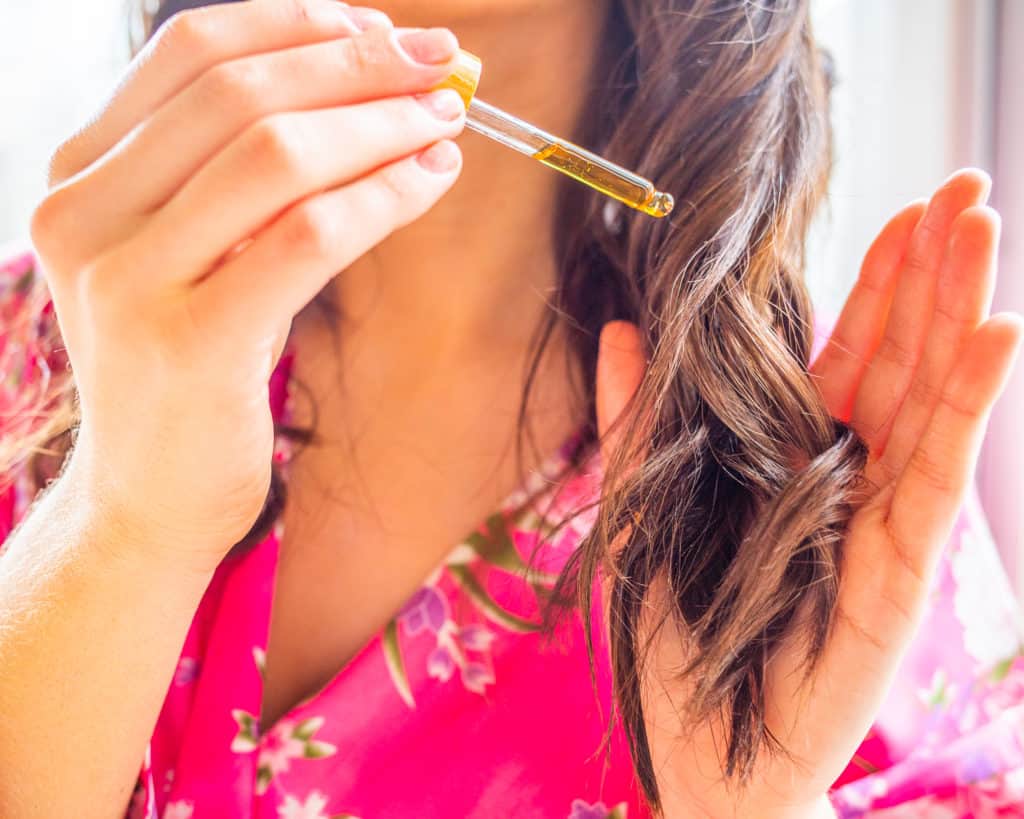
What is Scalp Oiling?
Scalp oiling is a simple concept – applying oil to the scalp. Used as a pre-shampoo treatment, akin to the traditional Ayurvedic method of hair oiling, there’s a conditioning effect on hair and scalp. That’s the process I use, with the occasional 24-hour steep as a maximum.
Why Do It?
Natural oils nourish and protect our hair strands and, used before shampooing, boost the shine and vitality of hair. Scalp oiling can also soothe an itching, dry, or flaky scalp.
All those benefits aside, the number one reason I see for scalp oiling is to get into a deeply relaxed, restorative state. If you’ve ever experienced the profoundly relaxing effect of a head massage, imagine it amplified by an herb-infused oil. Your scalp is packed with nerve endings just waiting to be soothed by plant compounds. Little else can ground the nervous system while easing mental tension and stress as quickly and fully as scalp oiling.
“The number one reason I see for scalp oiling is to get into a deeply relaxed, restorative state.”
I’ve seen this practice help many people, especially those who have trouble dropping into a restful sleep. If you’ve never done a head massage with herbal oils, try a lavender-infused oil and leave it on overnight.
This is such a wonderful ritual to introduce to your children, or anyone in your life that you would like to share massage with. I remember scalp oiling my son one time when he was about 9 years old and he literally fell asleep while sitting up while I was doing it. His entire body just completely let down and he couldn’t hold himself up anymore!
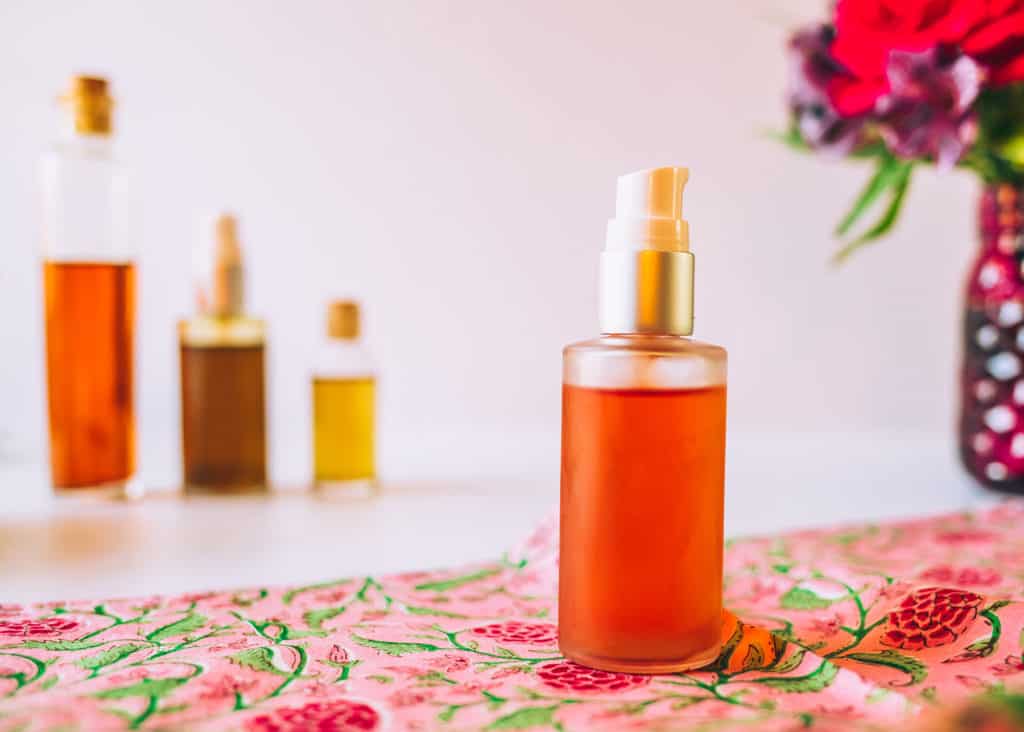
Scalp Oiling: How To
- Measure the oil – 2 tablespoons for very short hair and up to 4 tablespoons for long hair.
- Warm the oil by heating it gently in a saucepan or putting a small cup of oil into a larger cup of hot water. If you have a teacup warmer, use that.
- Part your hair.
- Apply the oil to your scalp, massaging it in with your fingertips.
- Continue to part different sections of hair, apply the oil, and massage in.
- To finish, massage the oil from the scalp toward the ends of your hair, applying oil directly onto all of your hair.
- Cover your hair with a cap and leave on for an hour, overnight, or up to 24 hours. Covering your head keeps oil from getting onto other surfaces and protects the scalp, which can feel sensitive when oil is on it.
- Wash your hair as you normally would.
Scalp Oiling FAQs
- How often should I oil? This varies from person to person. I like doing it about once a month because it’s messy and takes time.
- What oils should I use? If you’re hoping to stimulate circulation to the scalp, try an oil infused with rosemary or peppermint. For a more soothing experience, try calendula, St. John’s wort, or lavender herbal oils. You can also use plain coconut, sesame, or olive oil.
- How intense is the experience? This will depend on which oils you use and the length of time you leave them on. The first time you try scalp oiling, don’t do it before you have somewhere to be. Leave yourself plenty of time to disconnect from the clock and calendar, rest, and enter a healing state of mind. I scalp oil on days when the calendar is clear and I can create a little healing retreat for myself.
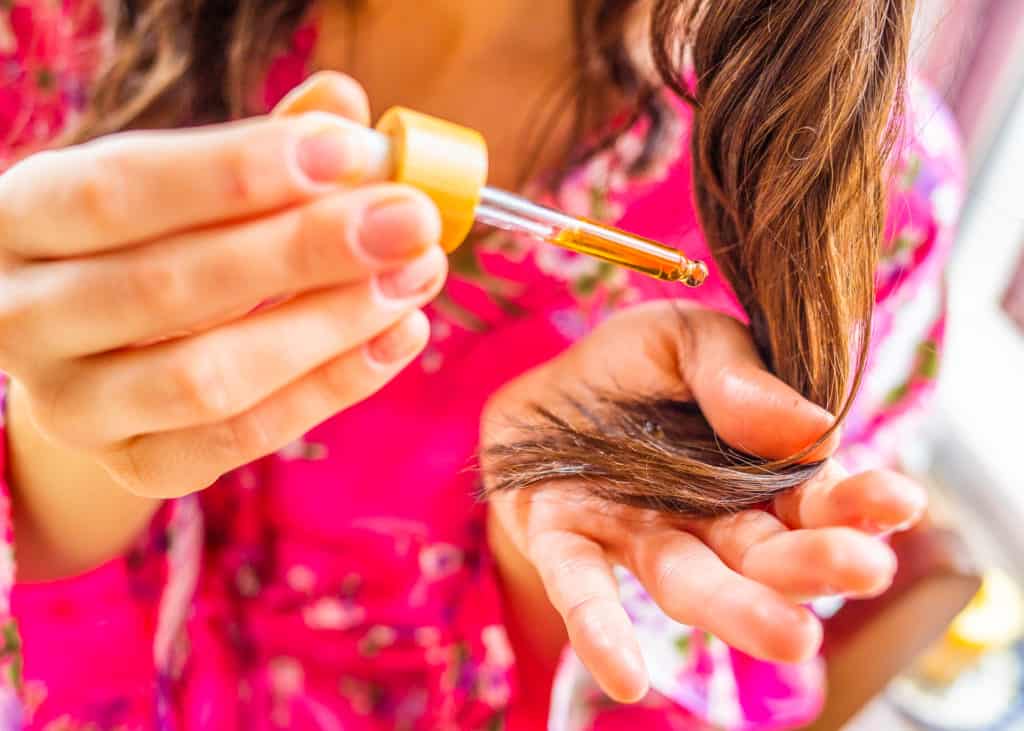
The Gateway to a Restorative State of Being
Scalp oiling is one of my favorite gateways to the restorative parasympathetic state, and I’d love to see more people add this practice to their self-care routines.
Self-care – though often dismissed as frivolous – is a foundational element of health care. It’s each of us claiming responsibility as the primary steward of our health. And an essential part of that stewardship is allowing our bodies and minds to slow down and recalibrate.
In those terms, self-care doesn’t seem so frivolous, does it? All the more reason to give your nervous system a reset with scalp oiling. I hope you’ll try it and see where it takes you.
Have you done scalp oiling before? What do you think?!
CLICK HERE to get on the wait list for the next time my online course Handcrafted Healing Herbal Oils opens for enrollment. We make the most potent oils for scalp oiling and go deeper into scalp oiling and how to use the oils in ways that are not common knowledge.


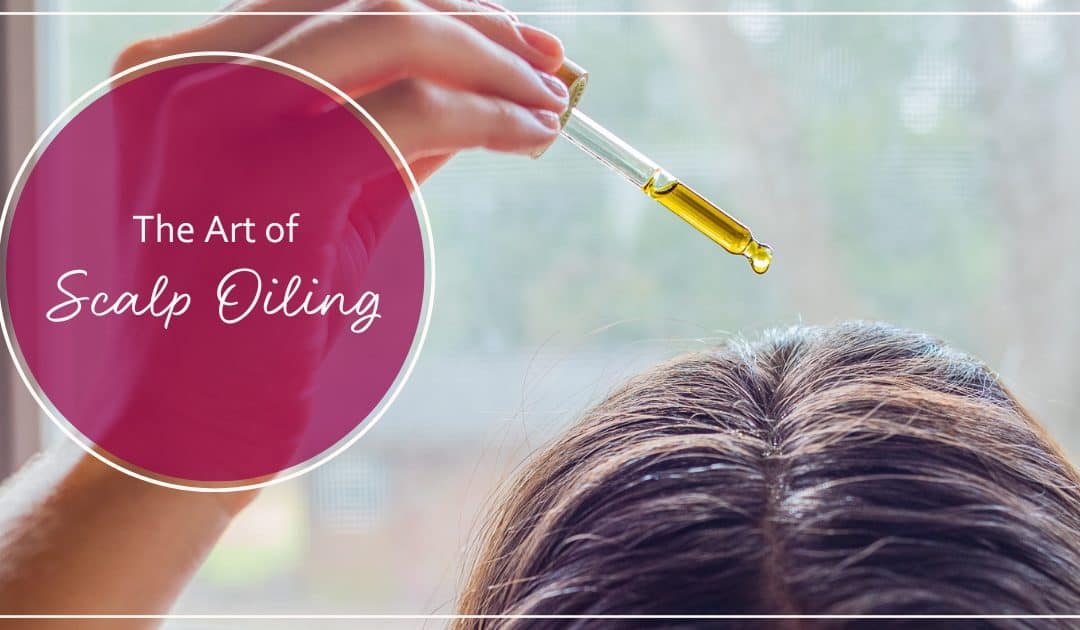

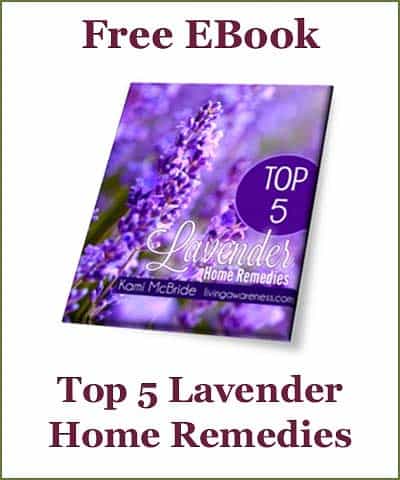

Ive been ouling for the past 3 months. I do it before bed to allow overnight effects of this lovely feeling. I was thinking for hair health and not thinking of the relaxing and calming effects. Will have to take note next time for its effect on sleep.
Yes, I make a lovely oil and put a few drops on 20 minutes or so before showering occasionally
Can it help with oily hair? My daughter has oily hair to begin with. Will it make it worse?
If you use oils like argan, jojoba or sweet almond oils, which are less greasy, and apply a clarifying shampoo before wetting your hair, scalp oiling should not make oily hair worse.
My practice of Oleation (Abhyanga) involves massaging with heated vegetable oil (possibly enriched with essential oil) not only the scalp but the whole body. I do this practice every day before showering and to prepare for Meditation and my Yoga Practice. Of course, in the Summer it is easier to apply it also on the hair, but in the Winter it is quite difficult as I have very long hair. It is different from yours, but the benefits I get are incomparable.
Is castor oil good to use?
Yes, it’s nourishing for the scalp
I actually just did this on Sunday with amla and rosemary oil. I try to do it once a month too. I’ve never done the overnight though. I apply in the morning, do my chores/housework and then shampoo. Keeps my very long hair healthy.
I do that also. Sometimes I do overnight and sometimes, it is just the day at home and then wash before bed.
Thank you- you are always so lovely!
sounds lovely
I lost my hair due to chemo. I want it to grow back. I’ve been putting castor oil on my scalp. Could I use castor oil for my base oil and does castor oil really help hair to grow? Thanks.
I’ve seen conflicting info about using it for regrowth, but it is anti-inflammatory and deeply nourishing. Rosemary infused oil is wonderful for encouraging hair growth.
…definitely will do this as I just finished making both the Rosemary infused oil and the lavender, hmmm, which one to try first?! …looking forward to this and thank you Kami for the inspiration!
That is great you are getting into scalp oiling! You will love them all~
Wonderful, can’t wait to try. I have an awful time trying to go to sleep. Thank for the suggestion.
I have a large amount of Argan oil my daughter gave me and now I can use it more effectively. I usually just rub a touch throughout my hair and scalp.
I never considered scalp oiling as the reason my day is wrecked after doing it lol. I oiled yesterday. I was so unproductive afterwards. It makes sense because it is so relaxing.